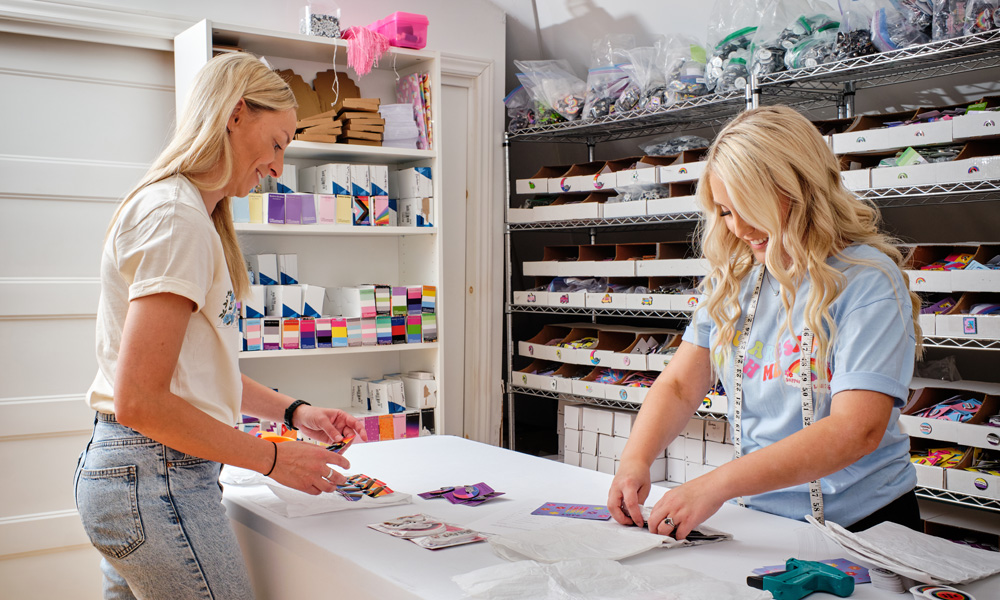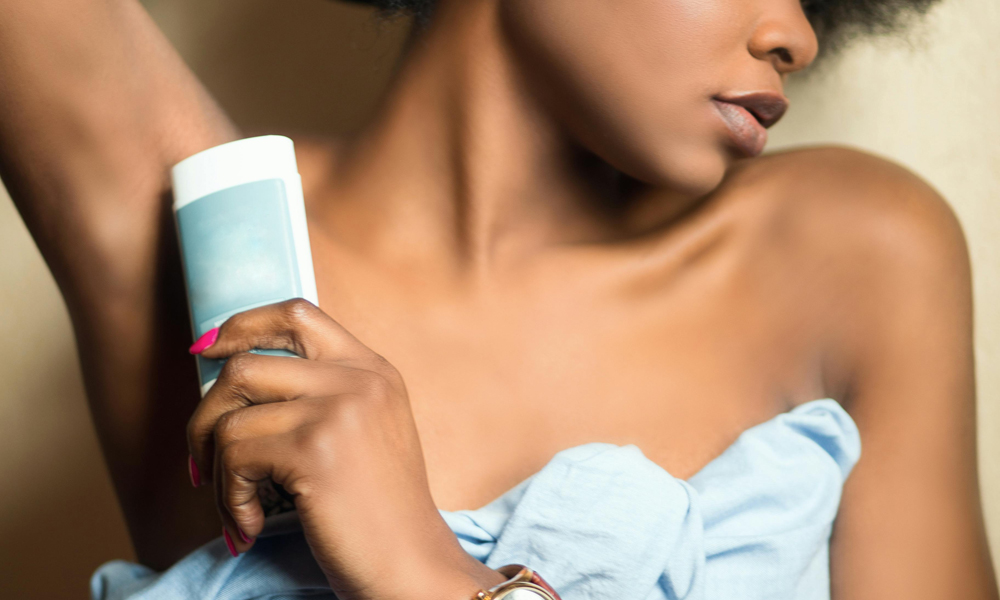Hydrating and protecting your skin this season is 100 per cent possible and necessary…
By Adriana Ermter
‘Sun care, do care’ is skincare’s most important motto, 365 days a year. And, yup, that means wearing a layer of SPF protection during winter’s cold and frosty months. “People think because it’s cold outside that we don’t need to protect our skin from the sun,” explains Dr. Lisa Kellett, a dermatologist and the founder of DLK Cosmetic Dermatology and Laser Clinic in Toronto. “But you can tan and burn when you’re outside in the winter. The sun’s UV rays, especially UVA rays, can penetrate clouds and glass too.”
Why screen in the winter
While it’s true that winter sun tends to be less intense than summer sun, its UVA (think aging) and UVB (think burning) rays are still present. In fact, although UVB radiation does decrease slightly during the cold season, UVA radiation remains the same in any given location no matter what the season. Their impact is sneaky too, as the crisp, cooler weather often makes the sun’s rays feel deceptively less intense, particularly when outdoor temperatures can have you shivering beneath bundles of layers. Factor in ice and snow’s capacity to reflect and bounce light off the ground and back onto exposed skin, and winter sun damage is very real.
“Anything the light can bounce off of, it will,” affirms Dr. Nowell Solish, a dermatologic surgeon, assistant professor at the University of Toronto, co-director of the Non-Melanoma Skin Cancer clinic at Women’s College Hospital, and founder and owner of his eponymous dermatology clinic in Toronto. “Unlike grass and dirt, which absorb the sun’s rays, during the winter light is scattered and then reflected back off of water, snow and ice, so it’s a double whammy of exposure for your skin.”
Impact of sun exposure
Exposure can cause skin cancer. According to the Canadian Skin Cancer Foundation, skin cancer is the most common type of cancer for both women and men, with more than 80,000 cases diagnosed in Canada each year – 5,000 of which are melanoma, the deadliest form of skin cancer. Additionally, the Canadian Cancer Societyestimated that in 2022 alone, 4,900 men and 4,000 women would be diagnosed with melanoma skin cancer that would result in 1,200 deaths. “UVB damages skin cells and causes DNA mutations that can eventually lead to melanoma and other types of non-melanoma skin cancer,” affirms Dr. Julia Carroll, a board-certified dermatologist at Compass Dermatology in Toronto.
As dangerous as sun exposure is, though, Dr. Carroll says cancer isn’t its only consequence. The appearance of fine lines, crow’s feet and wrinkles, the sagging and leathering of skin, as well as freckles, discolouration, sunspots and even broken blood vessels are also the result of sun exposure. “UVA radiation makes up 95 per cent of the ultraviolet radiation that makes it to the earth’s surface, and damage from UVA results in a tan,” says Dr. Carroll. “It is the primary form of radiation used in a tanning bed and causes skin aging, including wrinkles. UVB ray exposure makes up only 5 per cent of the UV rays from the sun. It does not penetrate as deeply as UVA, but it too can cause significant damage to the top layers of the skin.”
Why sunscreen works
Sunscreen can help reduce and prevent this impact when used year-round and on a consistent and daily basis. Sunscreens like Sun Bum Moisturizing Sunscreen Lotion SPF 30 ($21, available online at www.well.ca) and Aveeno Protect and Hydrate Face and Body Sunscreen SPF 30 ($18, available at Shoppers Drug Mart) can be swapped in for, and even replace, daytime moisturizers, as many include hydrating ingredients such as glycerin, ceramides and water to keep skin soft, supple and smooth.
When applying to your face, “just make sure your face is clean and that you apply a dime-sized amount,” adds Dr. Solish. “The ingredients in your sunscreen need to be absorbed into your epidermis [the outer, top layer of your skin] to do their job. If you need more hydration during winter’s drier months, you can always apply your regular eye and face creams and lotions over top of your sunscreen.”
Chemical vs physical
Choose a sunscreen that has a minimum SPF of 30 and provides broad-spectrum coverage to protect your skin from both UVA and UVB rays, be it a physical or a chemical-based product. “Technically, they’re all chemically based formulations,” says Dr. Kellett. “The difference is how they work.”
Physical (sometimes referred to as mineral) sunscreens like Sun Bum Mineral SPF 30 Tinted Sunscreen Face Lotion ($26, available online at www.well.ca) and Clinique Broad Spectrum SPF 50 Mineral Sunscreen Fluid for Face ($41, available at Hudson’s Bay) consist of active ingredients like zinc oxide or titanium dioxide, and sit on top of the skin to create a physical barrier that blocks the sun’s rays at the surface and reflects them away from the skin.
Chemical sunscreens like Neutrogena Ultra Sheer Dry-Touch SPF 30 Sunscreen ($18, available at Shoppers Drug Mart) and Clarins Dry Touch Facial Sunscreen SPF 30 ($34, available at Hudson’s Bay) are often mix-mastered with ingredients such as oxybenzone, avobenzone, octocrylene and octisalate, and absorb the sun’s rays like a sponge before converting them into heat, which is then released through the skin.
Rule of thumb: chemical sunscreens tend to work best for those prone to acne, as their formulations are thinner and noncomedogenic; mineral-based options are often gentler on sensitive skin.
Whether you choose a chemical or physical formulation, and regardless of the SPF number listed on the packaging, remember that these products are not meant to increase the amount of time you can spend in the sun; rather, they provide protection while you are exposed to the sun. “A sunscreen with a 60 SPF is not double the protection of one with a 30 SPF,” affirms Dr. Kellett. “The number is an indicator for how long it will take your skin to become red in the sun. Using a 30 SPF is a good base, and then reapply it regularly depending on how long you’re exposed to the sun.”
Safe screening
Recently, chemical sunscreens have faced criticism and have been said to have some adverse effects on the environment. In 2018, the Center for Biological Diversity, a US non-profit conservation organization, petitioned the US Food and Drug Administration for a national ban on the chemicals avobenzone, octocrylene, oxybenzone and octinoxate to protect marine and environmental health. Last year, the state senate in Hawaii passed a bill banning the use of the petrochemicals avobenzone and octocrylene to protect Hawaii’s coral reefs.
More research is required, and studies are continuously being conducted about the impact of these products, and about the possible absorption of certain sunscreen ingredients through the skin. To date, Health Canada stands behind the safety of all chemical sunscreens on drugstore shelves with a Drug Identification Number (DIN) and all mineral sunscreens listing a Natural Product Number (NPN). “The health risks of not wearing a sunscreen, or wearing one that has not been approved by Health Canada, far outweigh any other risk,” says Dr. Solish.
What about subbing out regular sunscreen products for newer SPF-infused facial powders? While these new products are a solid addition to your sunscreen regimen, they are not strong enough to stand alone against the sun, and are best paired with a broad-spectrum sunscreen with SPF of 30.
As for the best sunscreen you can buy and wear, “it’s the one you use every single day,” says Dr. Kellett.
ADRIANA ERMTER is a Toronto-based lifestyle-magazine pro who has travelled the globe writing about must-spritz fragrances, child poverty, beauty and grooming.






POST A COMMENT